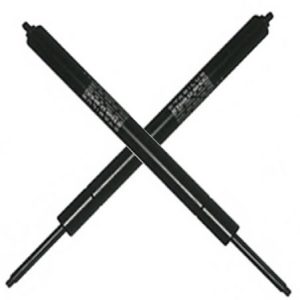
Gas spring dampers are used in a wide range of products. You can find them on office chairs, trunk hatches, cabinet doors, medical equipment and more. While they can store mechanical energy like all other springs, though, gas springs feature a unique design.
What Are Gas Spring Dampers?
Gas spring dampers are hydraulic-dampening devices that leverage compressed gas. Most of them contain nitrogen in the main tube section. When pressure is applied to a gas spring damper, the piston will recede into the tube section. This will force the nitrogen to compress. The compressed nitrogen will then exert its own force in the form of resistance.
Push vs Pull Gas Spring Dampers
Depending on their type, gas spring dampers can exert either a pushing or pulling force. Some of them exert a pushing force, whereas others exert a pulling force. Push-style gas spring dampers are the most common.
Gas spring dampers that exert a pushing force are essentially compression springs. Gas spring dampers that exert a pulling force, on the other hand, are extension springs.
Benefits of Gas Spring Dampers
What are the benefits of gas spring dampers exactly? They are better protected against premature failure than traditional springs. Traditional springs consist of coiled pieces of metal. When exposed to pressure, the coiled metal of a compression spring will compress. Alternatively, the coiled metal of an extension spring will stretch out while becoming longer. Whether it’s a compression or extension spring, it will experience mechanical stress.
Gas spring dampers tend to last longer than traditional springs because they don’t contain any coiled metal. Gas spring dampers only contain a gas-filled tube and a piston. As a result, they are exposed to less mechanical stress. And with less mechanical stress, gas spring dampers are long-lasting.
You may discover that some gas spring dampers can lock into place. Extension gas spring dampers, for example, often feature a locking mechanism. You can lock them in place by pushing an activation pin.
Whether locking or non-locking, some gas spring dampers are adjustable. Pressure adjustments are typically achieved with the use of a reducing valve. As long as a gas spring damper has a reducing valve, you can adjust its pressure.
In Conclusion
Gas spring dampers are pressurized tubes with a piston. They are designed to dampen hydraulic forces. The piston will move into the tube where it compresses the nitrogen gas.
